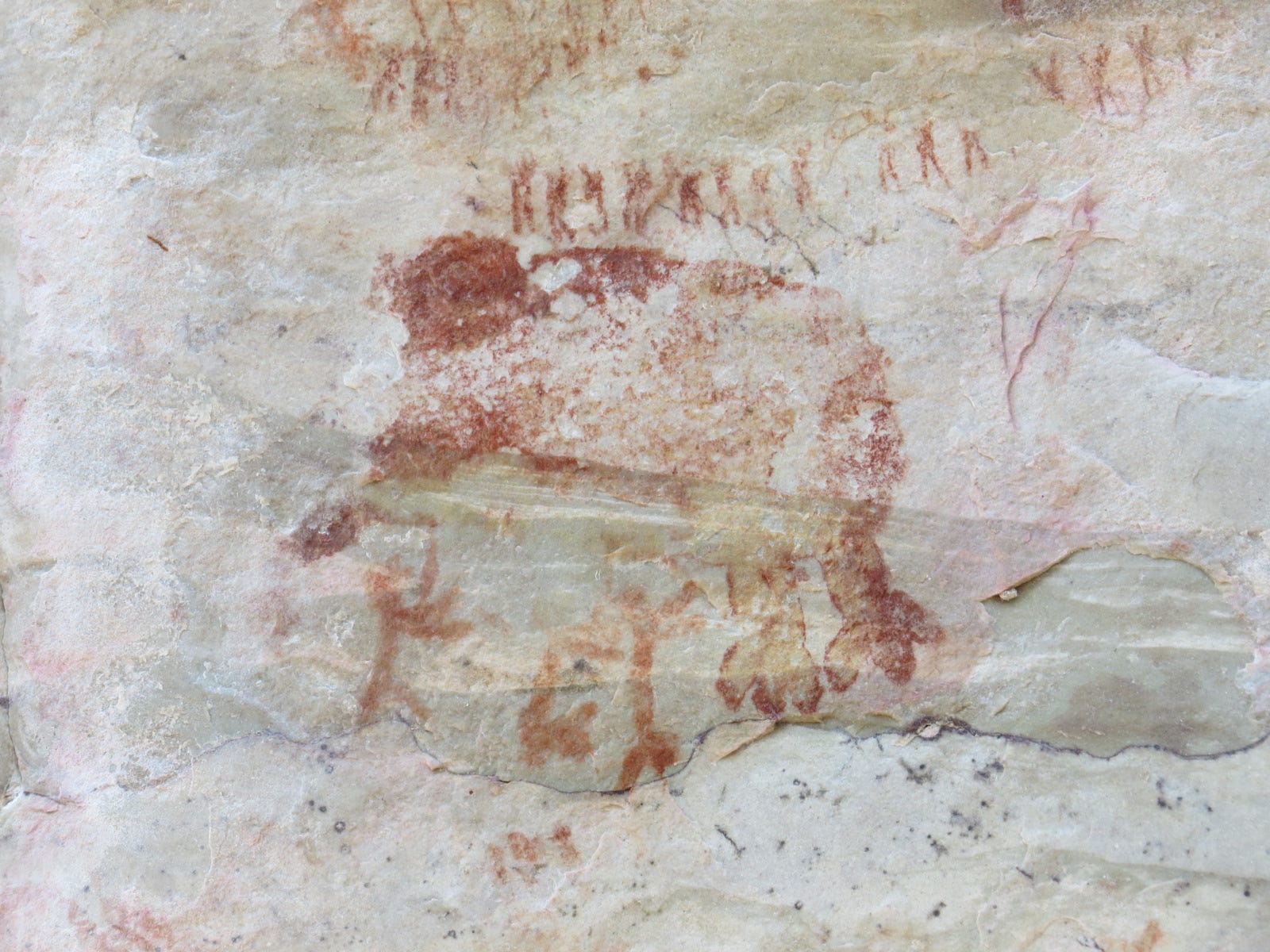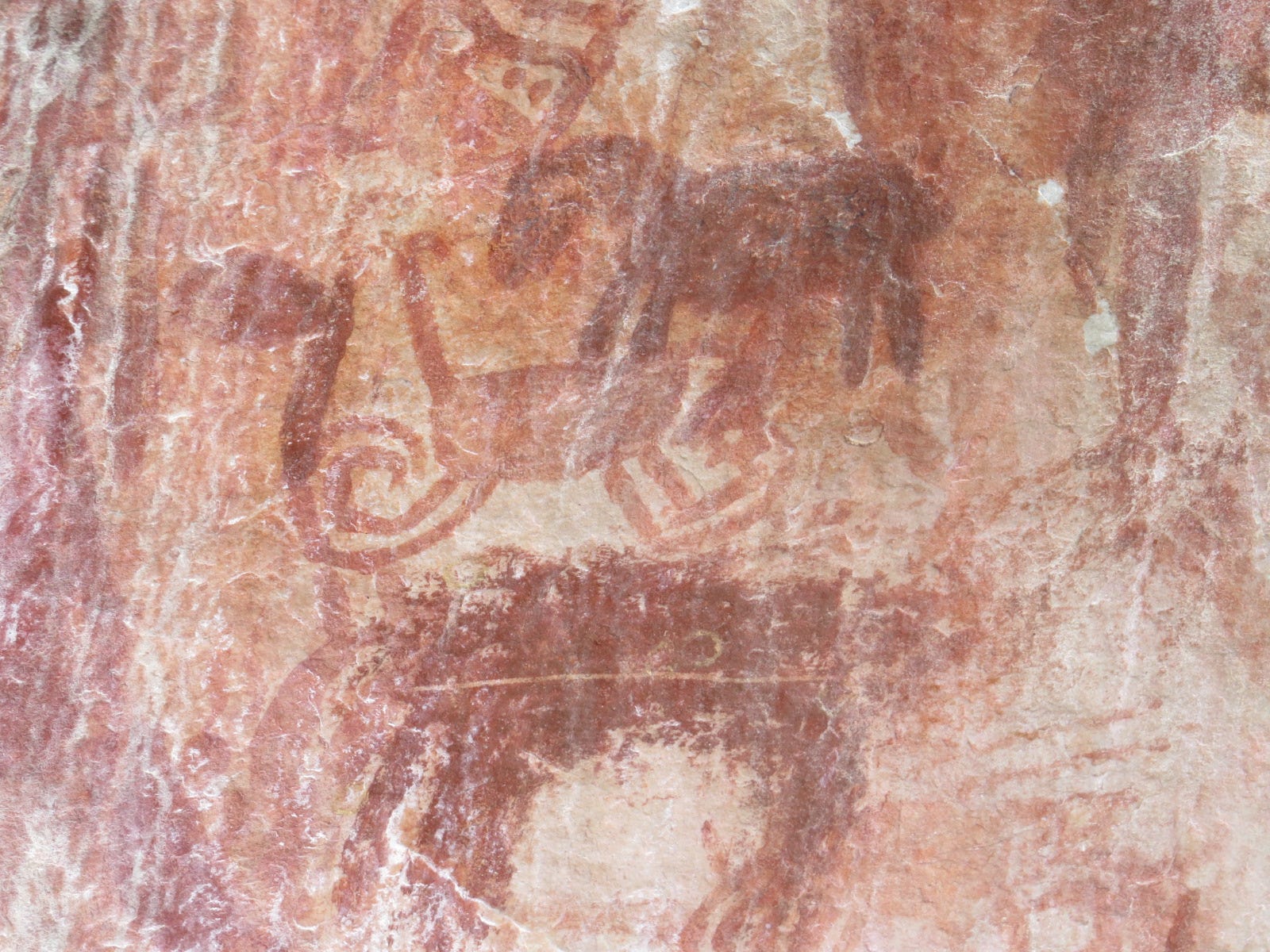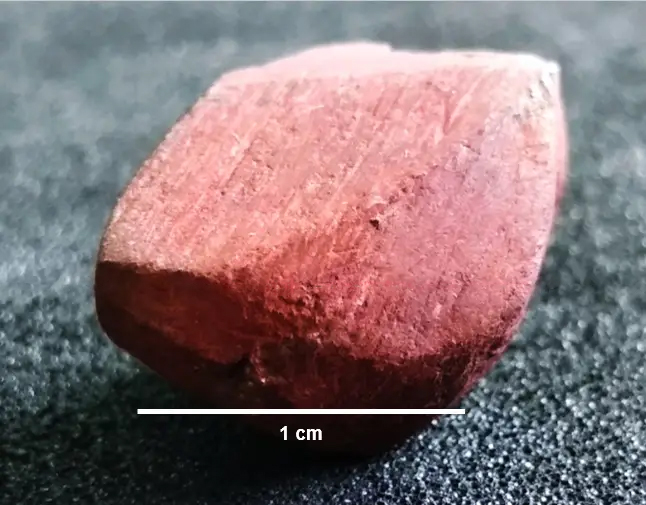1000’s of Beautiful, Historical Cave Artwork Drawings Have Been Discovered Deep in The Amazon
Greater than 12,000 years in the past, close to the top of an ice age, people hunted mastodons: historic mammals that resembled a cross between mammoths and elephants. However by about 11,600 BC, people had doubtless killed lots of the mastodons off.
Not less than, that is the main concept amongst many paleontologists. A current discovery bolsters it: Researchers lately uncovered 1000’s of drawings from an ice-age tribe hidden deep within the Amazon rainforest.
The drawings are unfold throughout three rocky shelters in Colombia’s Serranía La Lindosa area. They had been first painted between 12,600 and 11,800 years in the past. The biggest shelter alone, Cerro Azul, has drawings masking greater than 2.5 miles of its floor.
The photographs present a few of South America’s earliest inhabitants and their interactions with ice-age animals, together with large sloths, historic llamas, and ice-age horses.
Some drawings, just like the one beneath, even depict what specialists assume are mastodon hunts.
 A potential mastodon-hunting scene. (Jeison Lenis Chaparro-Cárdenas)
A potential mastodon-hunting scene. (Jeison Lenis Chaparro-Cárdenas)
1000’s of historic, remarkably detailed pictures
Lots of the pictures present uncommon ranges of element for such historic artwork, based on José Iriarte, a professor of archaeology on the College of Exeter and a pacesetter of the crew that made the invention.
“The ice age horse had a wild, heavy face,” Iriarte informed The Guardian. “It is so detailed, we are able to even see the horse hair. It is fascinating.”
The researchers revealed a examine in regards to the three websites in April within the journal Quaternary Worldwide. However on Monday, the College of Exeter launched a press release with details about the invention to coincide with the websites’ protection in an episode of Jungle Thriller: Misplaced Kingdoms of the Amazon, a documentary collection set to air within the UK beginning Saturday.
Mark Robinson, an environmental archaeologist on the College of Exeter and co-author of the April examine, mentioned in a press release that the individuals who produced these work doubtless moved into South America at a time of “excessive local weather change.” The ice age was ending.
 Drawings of potential historic llamas and paleo horses. (Jeison Lenis Chaparro-Cárdenas)
Drawings of potential historic llamas and paleo horses. (Jeison Lenis Chaparro-Cárdenas)
“The Amazon was nonetheless remodeling into the tropical forest we recognise right this moment,” he mentioned. “The work give a vivid and thrilling glimpse in to the lives of those communities. It’s unbelievable to us right this moment to assume they lived amongst, and hunted, large herbivores, some which had been the dimensions of a small automotive.”
The work are so huge and quite a few that they are going to doubtless take a few years to review absolutely. Plus, Jeison Lenis Chaparro-Cárdenas, an anthropologist on the Nationwide College of Colombia and a member of the analysis crew, informed Enterprise Insider that “the overwhelming majority” of cliffs within the area had not but been absolutely explored.
A deeper look into the lives of prehistoric Amazonians
Along with historic megafauna, the cliff and cave drawings depict alligators, tapirs, monkeys, turtles, serpents, and porcupines. Additionally they embrace geometric shapes, in addition to on a regular basis scenes displaying folks searching and interacting with crops and timber.
“There are a lot of issues and moments of pleasure and amazement,” Chaparro-Cárdenas mentioned. He added that the majority pictures revolved round a typical theme: “the majesty of the character that surrounded them and with which they interacted of their each day lives.”
 A software used to color with ochre. (Jose Iriarte)
A software used to color with ochre. (Jose Iriarte)
The crew carried out soil excavations across the rock-art websites to seek out clues about how the inhabitants scraped clay to extract ochre, a pigment they used to make the drawings.
These investigations revealed the stays of animals doubtless eaten by the traditional folks, together with piranhas, turtles, armadillos, and capybaras, based on Chaparro-Cárdenas. Fashionable-day inhabitants of the Amazon rainforest nonetheless eat lots of the animals discovered on the websites.
“This reveals an amazing number of assets that had been utilized by the inhabitants of the Amazon for greater than 12,000 years,” Chaparro-Cárdenas mentioned.
A dangerous journey ‘100% price it’
The crew first started finding out the area in 2014, two years earlier than the Revolutionary Armed Forces of Colombia (FARC) struck a peace treaty with Colombia’s authorities. The Serranía La Lindosa area falls underneath FARC territory, and getting into safely nonetheless requires cautious negotiations with the guerilla group, based on The Guardian.
The area additionally has many pure hazards. Toxic snakes and caimans inhabit the world, which is an hourslong journey from the closest city.
At one level, a big venomous bushmaster snake blocked the analysis crew’s path. They needed to stroll round it, figuring out they had been removed from any hospital, The Guardian reported.
“You are in the course of nowhere,” Ella Al-Shamahi, an archaeologist who labored with the crew on the forthcoming documentary, informed The Guardian. However she added that braving the hazards was “100%” price it.
This text was initially revealed by Enterprise Insider.
Extra from Enterprise Insider: